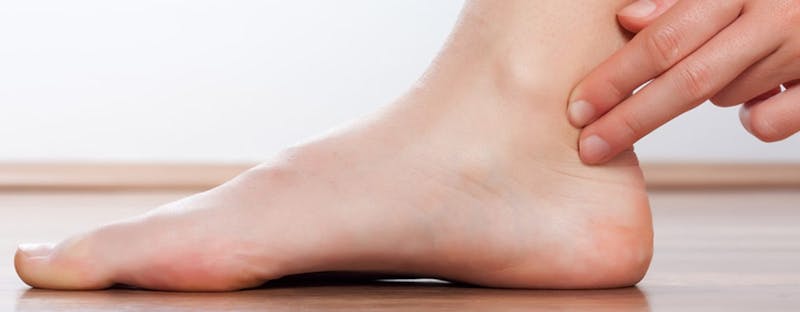Schedule a Consultation
Contact Us


According to the American Diabetes Association, a major reason individuals with diabetes seek medical care is due to issues with nerve damage and circulation. Such problems often affect feet. Diabetic foot issues are sometimes overlooked in early stages if infections or signs of damage are in unseen parts of feet between toes or on the bottom of feet. One way to minimize health risks associated with your feet if you are living with any type of diabetes is to get into the habit of performing foot exams. It’s a simple process that could prevent potentially serious problems.
Clean Your Feet and Get Into a Comfortable Position
Get started by cleaning your feet. You can also do a self-exam after you get done with your regular bath or shower. After cleaning and drying your feet, sit on a comfortable bed or chair in a room with good lighting. Lift one foot over the other leg. If you are unable to assume a comfortable position, ask a friend or family member for help.
Get a Good View of the Bottom of Your Foot
Undetected problems are more likely to develop on the bottom of your feet. Having flat feet can also increase your odds of sustaining an injury in this location. Check the bottom of each foot by rotating your ankle slightly. If you aren’t able to fully see the underside of your foot, use a handheld mirror.
Look for Anything Unusual
Examine all parts of each foot for anything unusual. Pay attention to the balls of your feet between your toes and arch since this is where pressure is placed while walking. This is also where a type of foot pain that can make diabetic nerve pain worse known as metatarsalgia sometimes develops. Next, check the soles of your feet for any irregularities or bumps. On your heels, feel for rough, dry, or cracked skin. Feel the entire foot and take note any noticeable changes in temperature, texture, or shape. Also, compare both feet to see if there are any noticeable differences. Talk to your doctor or a foot specialist if you observe:
Diabetes affects about 30 million Americans. If you’ve been diagnosed with this condition, part of your regular care should include visits to a foot doctor to make sure there aren’t issues that should be treated sooner rather than later. People with diabetes are also at a greater risk of developing infections from if open sores or ulcers develop on feet. if you spot anything out of the ordinary during a self-exam of your feet, a podiatrist can determine if it’s something that needs attention.